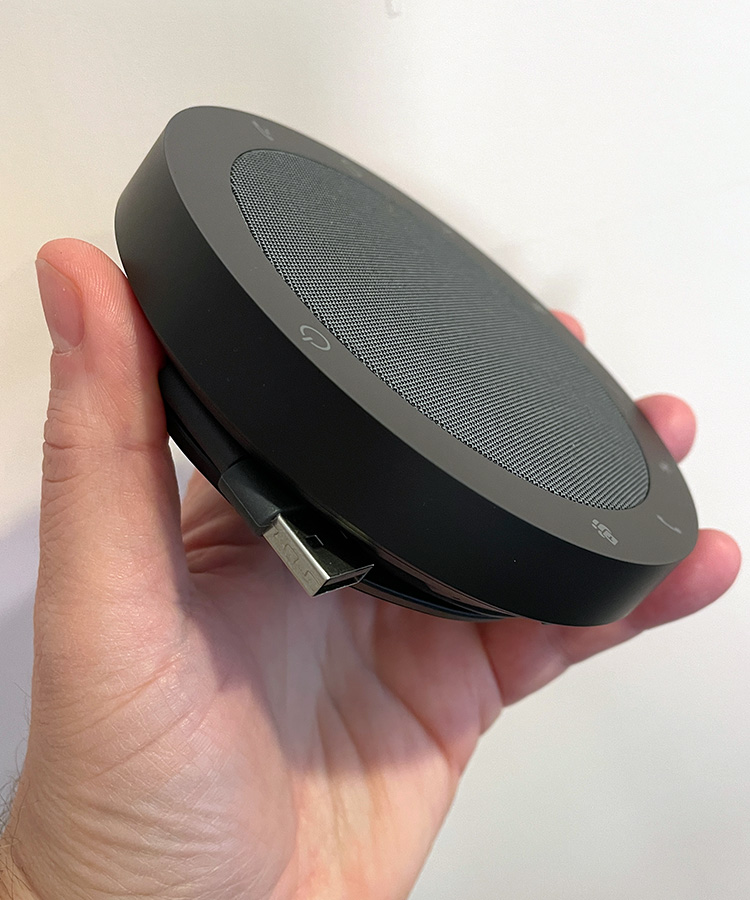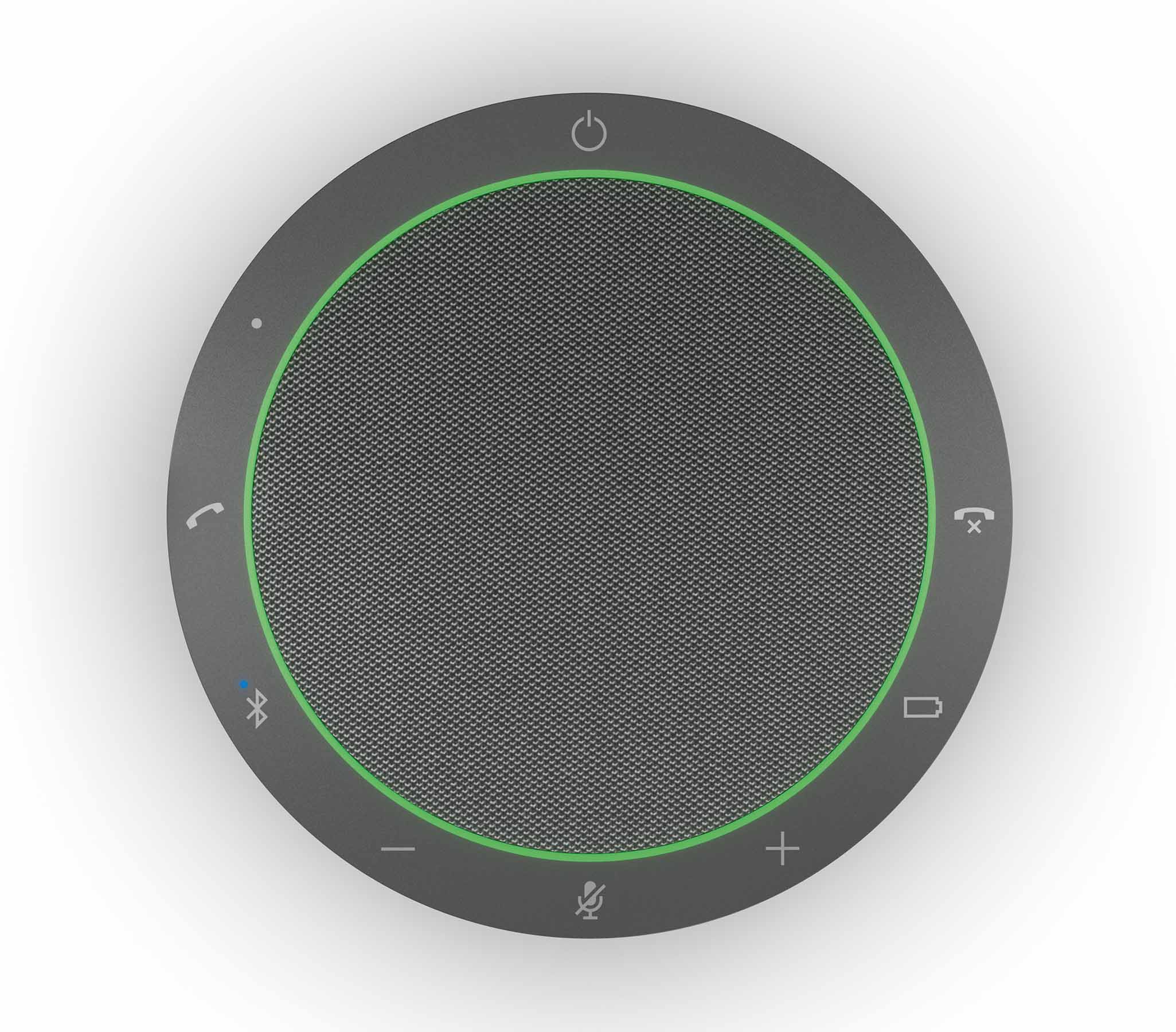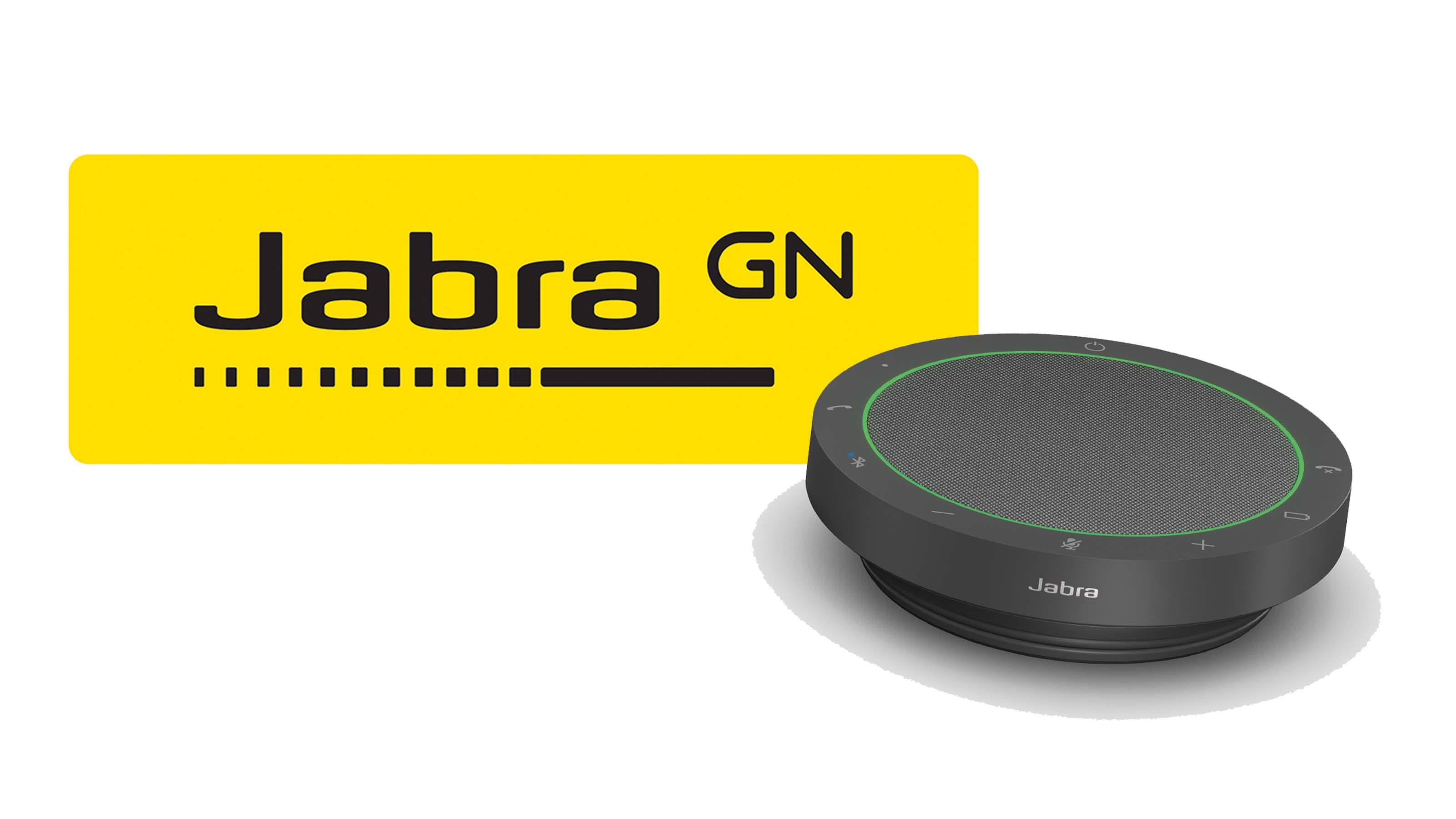I never thought I needed a speakerphone in my home office until I tried one. No more headsets on videoconferencing calls. No more muffled sound from the speakers of my closed laptop (my external monitor has no speakers). No more picking up my cell phone to answer calls. Throw in the ability to take it on the road for small meetings and you can start to understand the appeal.
Jabra offers several speakerphones, and I recently tested the Speak2 55. Priced at $189 on the Jabra website, it’s a mid-priced speakerphone option.
[SCN Hybrid World: Expert Insights and 16 Speakerphones to Know]
Considering SCN’s recent emphasis on sustainability, it should be noted that Jabra reduced its packaging for the Speak2 55, and the packaging is made with recyclable materials and FSC-certified paper. I understand that unboxing videos are an ongoing trend—don’t worry, it’s still a nice presentation. Now, let’s see what you get once it’s out of the box.
1) Built for Travel

Like many other speakerphones on the market, the Speak2 55 resembles an overambitious hockey puck, though this one has black fabric covering the speaker. It also ships with a carry pouch. No, it’s not ballistic nylon, but it provides some protection for your speakerphone when it’s tucked in your backpack or briefcase.
Then there’s the integrated USB-A cord. In a world filled with removeable (read: easily misplaced) and proprietary (read: a nightmare if misplaced) cables, this is a welcome feature. I spoke with Jabra’s Holger Reisinger at Enterprise Connect 2023, and he said the integrated USB cord was a design decision based on customer requests.
On the one hand, if you break the cable, you break your phone. On the other hand, when was the last time you broke the integrated cord on your vacuum, toaster, or other device? Bonus design points: The integrated cord wraps neatly around the base for transport and includes a USB-C adapter, so you have connectivity options.
[Review: Audio-Technica Targets Streaming Production with StreamSet]
2) Ring of Power
The Speak2 55 speaker is surrounded by an LED light ring, which is a nice feature. It is fully illuminated in white when you initially begin use, but eventually reduces to a small, glowing arc near the power button. The entire light ring turns green when a call is live or red if you press mute.

Around the ring are all your controls. Press the power icon for a few seconds and Jabra Speak2 55 comes to life. The rest of the controls are equally intuitive. Plus and minus icons control volume, with the mute button positioned between them. You also have dedicated icons for picking up and hanging up your phone. The unit charges when it’s plugged into your laptop; touch the battery icon to see how much battery power you have.
Hold down the Bluetooth button for a few seconds and you can pair the Speak2 55 with your cellphone or laptop. Once you’ve paired your other device, it just takes a tap to reconnect, or you can set it to auto-reconnect. The Bluetooth icon has its own blue light indicating you’re connected to another device. The Bluetooth connection takes precedence over your computer, so any laptop-based content is muted when a call comes through.
3) Easy Operation
You can download the user manual from Jabra’s website, but the Speak2 55 is pretty intuitive. A quick update through the free Jabra Direct software (the LED circle turns purple) and I was ready to go. I reviewed the Microsoft Teams version, which provides special functionality for the videoconferencing platform. (The UC version has a customizable play/pause button in place of the Teams control.)
A built-in battery allows for up to 12 hours of wireless use. You can check the battery status by pressing the battery icon on the unit. I let the Speak2 55 play music from my iPhone for more than eight hours via Bluetooth, and it had still had plenty of juice.
Then there’s the integrated USB-A cord. In a world filled with removeable (read: easily misplaced) and proprietary (read: a nightmare if misplaced) cables, this is a welcome feature.
Of course, your speakerphone can also serve as your system’s speaker, which means you’ll probably be using it to listen to music as well as meetings. While I can’t say it provides the best fidelity from a speakerphone I’ve tested, it did provide a nice streaming rendition of “The Tipping Point” from Tears for Fears. With its connection to Jabra Direct, I’d like to see EQ choices in a future update.
The Speak2 55 features four beamforming, noise-cancelling mics to provide 360-degree coverage, plus voice level normalization so everyone in the room can be heard. All of that is handled automatically by the unit.
Let’s be clear: This is a speakerphone, not a headset (though Jabra sells those, too) that is designed to pick up audio from more than one person in a room. I had several Bluetooth test calls with the Speak2 55, and no one thought I was on a handset or headset. That said, I was told the Speak2 55 sounded “infinitely better” than another speakerphone I tested, even when I wandered across the room.
Plus, I used the Speak2 55 connected directly to my computer for numerous videoconferences without complaint. I have a reasonably quiet Logitech wireless keyboard and was told my typing could not be heard on the call.
While the Speak2 55 is a solid speakerphone choice, it really shines as a Bluetooth add-on for your phone calls or videoconferences. The main reason to get a speakerphone is to hear and be heard, and this Jabra unit certainly delivers. The integrated cable, long battery life, and Teams compatibility just add more value.

